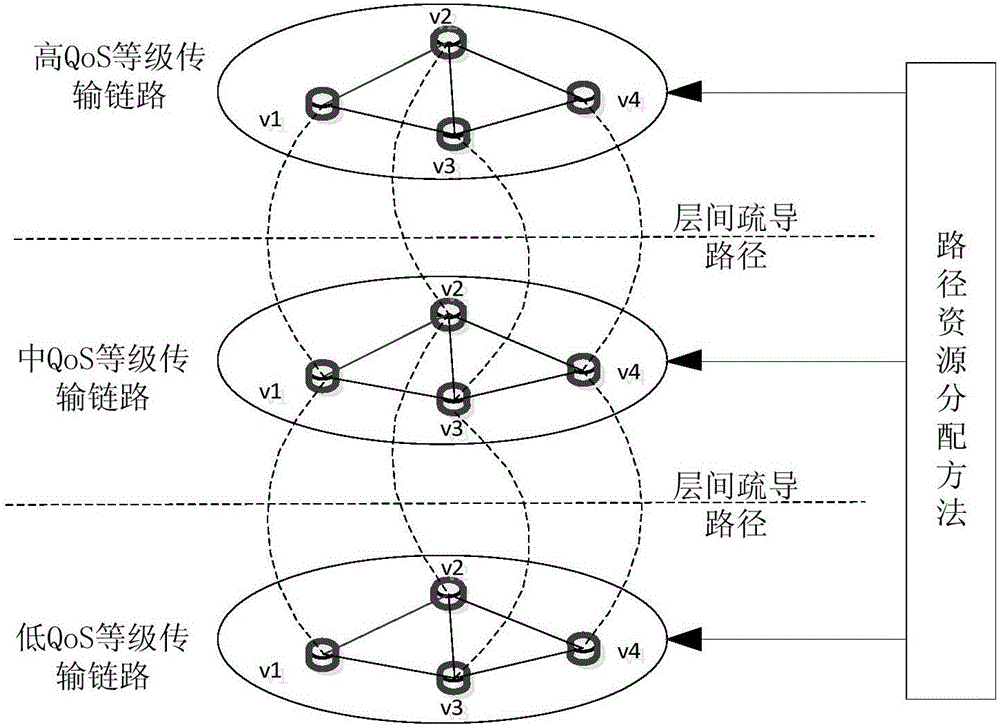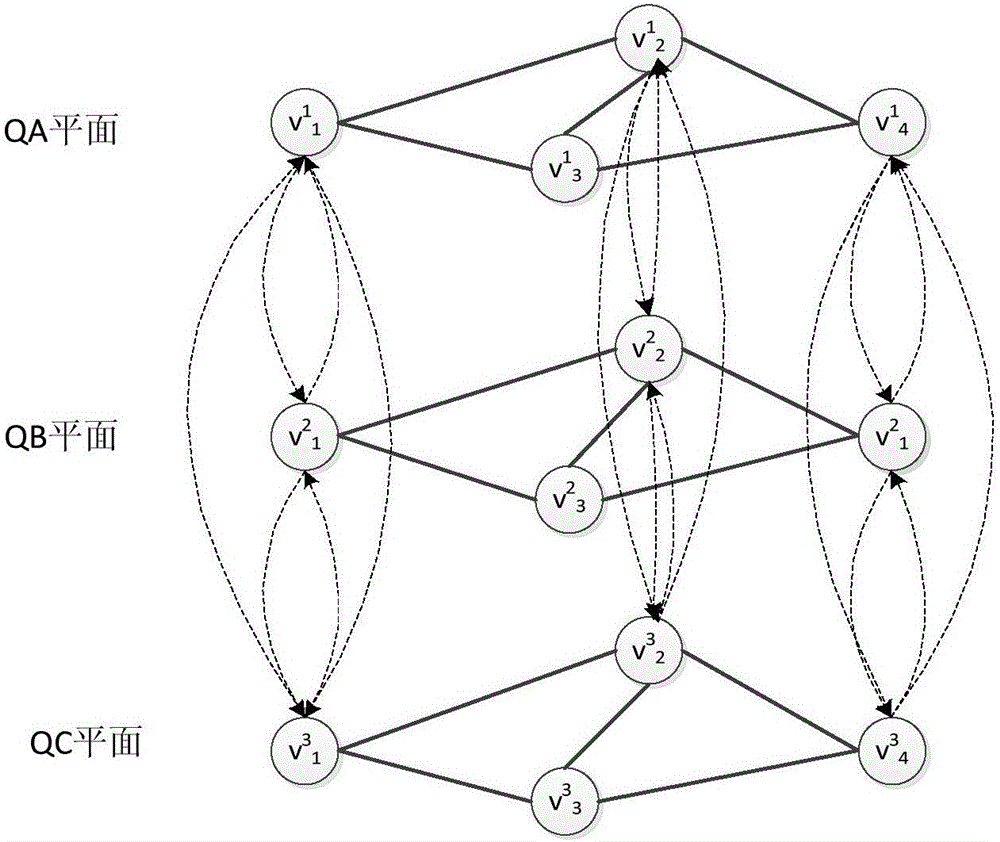QoS differentiation-based path resource allocation method applied to hybrid network
A resource allocation and hybrid network technology, applied in data exchange networks, digital transmission systems, electrical components, etc., can solve the problems of complex implementation, lack of coordination of resources, and inability to meet the needs of logical path resource allocation, and achieve simple algorithms and guaranteed success rate effect
- Summary
- Abstract
- Description
- Claims
- Application Information
AI Technical Summary
Problems solved by technology
Method used
Image
Examples
Embodiment Construction
[0022] The present invention overcomes the deficiencies of the prior art, and provides a path resource allocation method based on QoS distinction in a hybrid network. Firstly, by distinguishing the service quality levels that different path resources in the network can provide, a QoS layered graph is established, and then according to Different QoS requirements of business requests adopt different resource allocation strategies, and the physical resources and logical resources of the hybrid network are considered uniformly, which not only deeply integrates the resources of each layer, but also reduces the complexity of the method, and can also dynamically adjust the business QoS requirements, ensuring the success rate of resource allocation, can achieve path resource allocation that meets multiple types, multiple granularities, and multiple QoS requirements, and enables different network path resource information to be shared according to different QoS requirements. The specifi...
PUM
 Login to View More
Login to View More Abstract
Description
Claims
Application Information
 Login to View More
Login to View More - R&D
- Intellectual Property
- Life Sciences
- Materials
- Tech Scout
- Unparalleled Data Quality
- Higher Quality Content
- 60% Fewer Hallucinations
Browse by: Latest US Patents, China's latest patents, Technical Efficacy Thesaurus, Application Domain, Technology Topic, Popular Technical Reports.
© 2025 PatSnap. All rights reserved.Legal|Privacy policy|Modern Slavery Act Transparency Statement|Sitemap|About US| Contact US: help@patsnap.com



